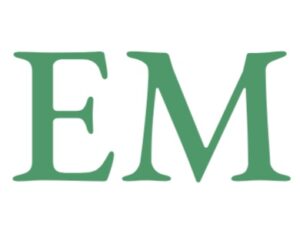NEW YORK, February 28, 2023 (Newswire.com) - Trinity Church Wall Street has awarded more than $57 million in grants in 2022, the largest grant-making year in the church's history. Trinity rounded out 2022 with almost $10 million in grants going to nine organizations that are responding to unfolding crises and building long-term resiliency in New York City and across the world.
Borough of Manhattan Community College (BMCC)'s emergency fund for students is receiving $750,000 to meet the short-term needs of housing-insecure students. This builds on over $2 million Trinity has previously granted to support housing-insecure and justice-impacted students at the local community college just minutes from Trinity Church.
Anthos|Home, a new nonprofit, centralizes the rental subsidy application, unit search, approval, and move-in processes for housing voucher holders. This builds on work Trinity is supporting around vouchers, keeping immigrants in their homes during the pandemic, advocating for raising voucher value to fair market rents, and tackling "source of income discrimination" against voucher holders.
Trinity's commitment to mental health continues with a $300,000 grant and $750,000 program-related investment to Fountain House, a pioneer of peer-led clubhouses that meet the comprehensive needs of people with serious mental illnesses. This builds on 67 grants focused on mental health and healing in 2022, a new, intentional lens for Trinity's grantmaking as the COVID-19 pandemic exacerbated a growing mental health crisis, particularly for youth.
In addition to supporting its neighbors in New York City, Trinity ministers to those suffering throughout the world. Trinity is enthusiastic to work again with Episcopal Relief & Development, which was awarded a five-year, $5 million grant to respond to disasters and strengthen the resilience of marginalized communities. This grant will support the organization's work with community-based Anglican partners to meet the immediate needs of one million people impacted by disasters and bolster the economic stability of an additional 125,000 people.
Trinity is also scaling its commitment to GatherLab, which previously received funding to aid faith leaders in strategic planning conversations with their congregations and to convene a conference on neighborhood economics. A $1.2 million grant from Trinity will allow GatherLab to develop a national network of faith leaders who are rethinking how their churches can engender economic justice locally.
"Part of being a good neighbor is listening to those who are asking for help and knowing how to respond when your community is in crisis," said the Rev. Phillip A. Jackson, Rector of Trinity Church Wall Street. "Trinity's grantmaking, though always grounded in our values and long-term vision, continues to evolve as needs change. The last two years we've dealt with a pandemic, a surge of asylum seekers, and an affordable housing crisis. These grants are in response to what we're seeing and hearing from our neighbors here in New York City and our national and global communities."
Trinity's $57 million in grants support organizations locally, nationally, and internationally, and this is an increase of $11 million from the previous year.
"We are inspired by the work of our grantees and are thankful to have increased the funding available to them to do their good work," said Holly Coats, Managing Director of Grants Management for Trinity Church Wall Street. "Trinity's grantmaking has increased seven-fold in the four years since we developed our current strategic initiatives. During that time, we have sought to respond to needs, build long-term resilience, and affirm the dignity of all people in our society."
The 2022 grantmaking has included more than $2 million to more than 20 organizations supporting asylum seekers arriving in New York City. Trinity grantees including Women in Need (Win), Providence House, and Housing Works have given asylum seekers shelter. Others, like Make the Road New York, Hour Children, and the Coalition for the Homeless, are providing supplies such as food, clothing, diapers, feminine hygiene products, and MetroCards.
Other grantees are expanding their programming in innovative ways. The Interfaith Center of New York, long a champion for welcoming newly arrived immigrants, is working with houses of worship from various faiths to offer overnight emergency shelter.
In 2023, Trinity will continue to make grants and investments promoting healthy minds and safe communities, providing housing for all New Yorkers, and building capacity throughout the Anglican Communion.
About Trinity Church Wall Street:
Trinity Church Wall Street is a vibrant and growing Episcopal parish of more than 1,600 members. Over the past 325 years, the fabric of Trinity has been woven by the Spirit from the lives and gifts of diverse people; their desire to live their faith through worship, service, study, and stewardship; and the ever-evolving life of New York City itself. The parish is guided by its mission to share God's love for all people. Trinity's programs seek to offer shared encounters with the holy, to cultivate compassion, to deepen knowledge and spiritual practices, to work for justice rooted in essential human dignity, to provide places of solace and healing, and to inspire a desire in all people to be conscientious contributors to the life of our city and the world. More than 20 worship services are offered every week online at trinitywallstreet.org and at historic Trinity Church and St. Paul's Chapel, the cornerstones of the parish's community life, worship, and mission.
Contact Information:Tiani Jones
Media Relations Manager
[email protected]
9177103289
Original Source: Trinity Church Wall Street Announces Final Round of 2022 Grants, Bringing the Total to $57 Million


